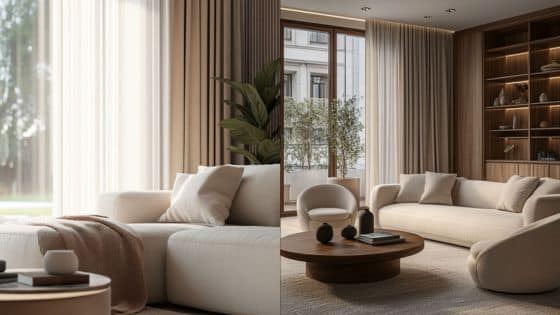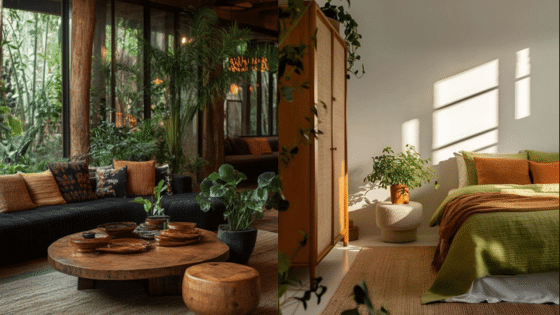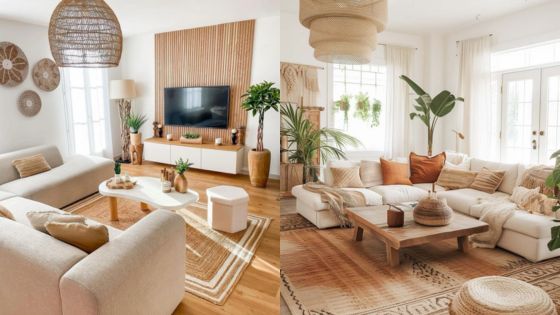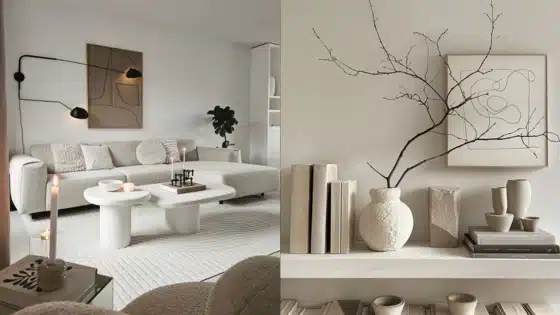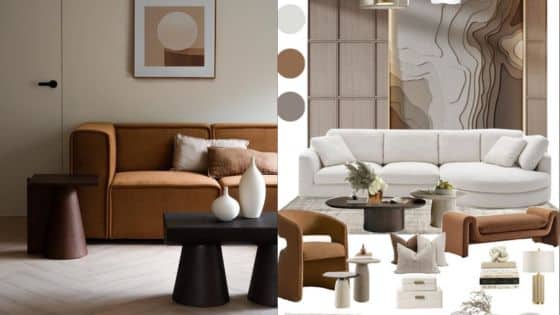
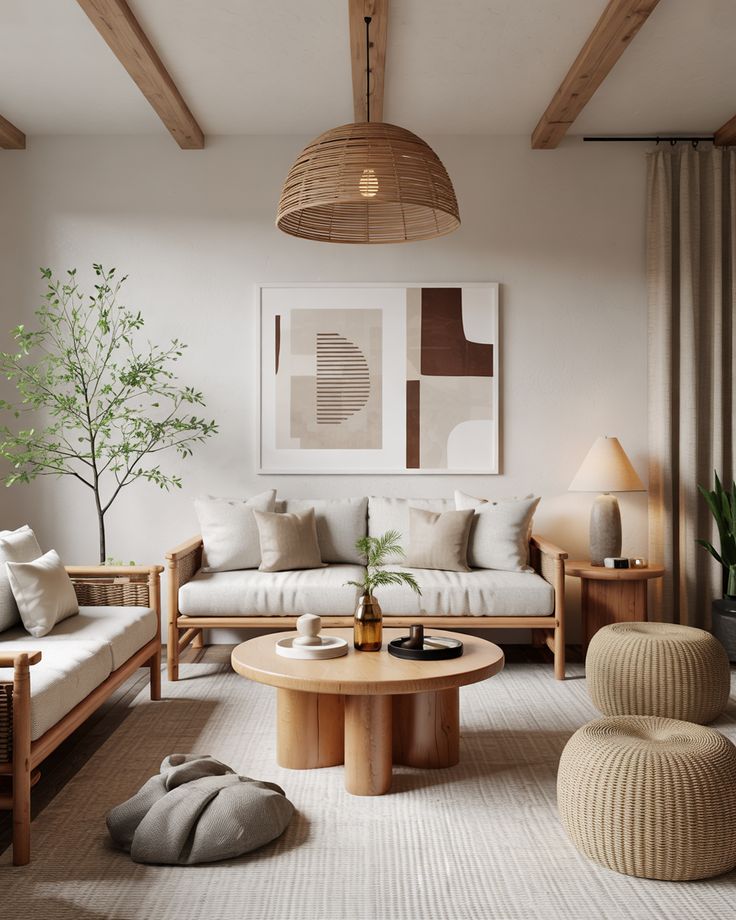
Creating a cozy interior means making a space feel warm, inviting, and comfortable. The key to cozy design is using soft textures, warm colors, and thoughtful lighting to create a relaxing atmosphere. Small changes in furniture arrangement and accessories can also add to the feeling of comfort.
People often think cozy design is about clutter or too many blankets, but it is more about balance. It involves layering textiles like throws and pillows, choosing colors that soothe, and placing lights that add warmth without being harsh. These simple steps can turn any room into a cozy retreat.
Whether in a small apartment or a large house, making a space cozy is about attention to detail. It includes using natural materials, arranging furniture to encourage relaxation, and updating decor to fit the season. Understanding these basics helps anyone create a home that feels just right.
Key Takeaways
- Warm colors and soft textures help make a space feel cozy.
- Proper lighting and furniture layout improve comfort.
- Small details and seasonal updates keep a home inviting.
Foundations of Cozy Interior Design
Cozy interior design relies on natural textures, soft lighting, and warm colors to create comfort. It focuses on making spaces feel inviting without clutter or coldness. Knowing what makes a space cozy helps avoid common decorating mistakes.
Understanding Cozy Aesthetics
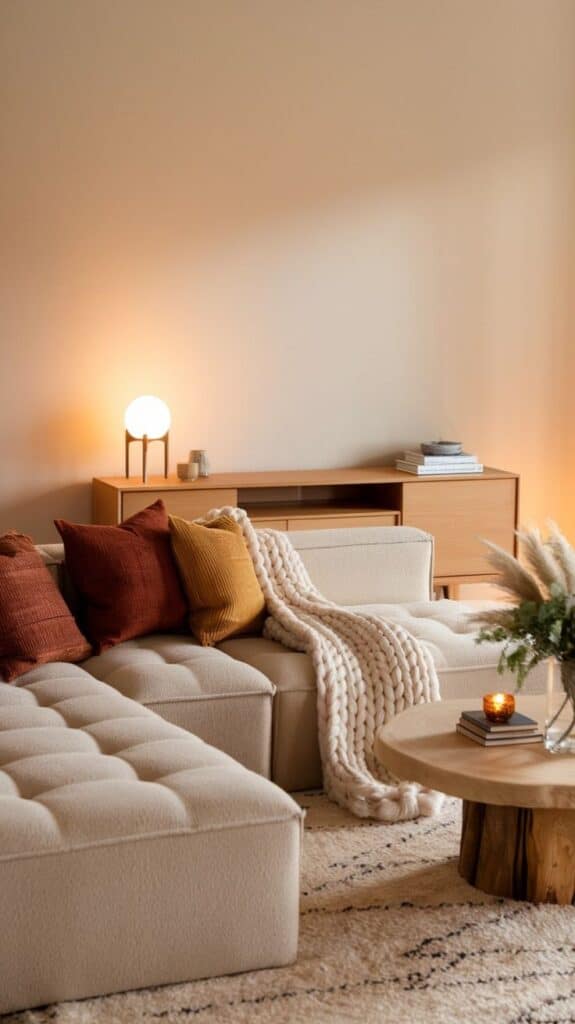
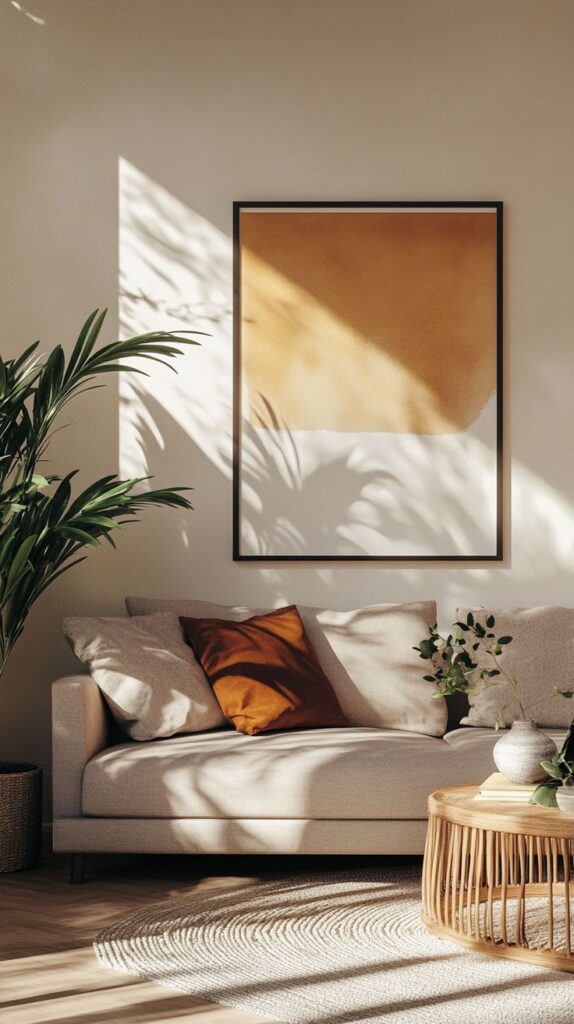
Cozy design is about warmth and simplicity. It often uses warm colors like beige, brown, or muted reds. Natural materials, such as wood, wool, and linen, add texture and interest. Soft fabrics like throw blankets and cushions invite relaxation.
Lighting is important. Lamps with warm bulbs or candles create a soft glow. Avoid harsh overhead lights that can make a room feel sterile.
Personal touches, like books or plants, make a space feel lived in but not messy. Keeping things organized without emptying the room is key.
Key Principles for Creating Warmth
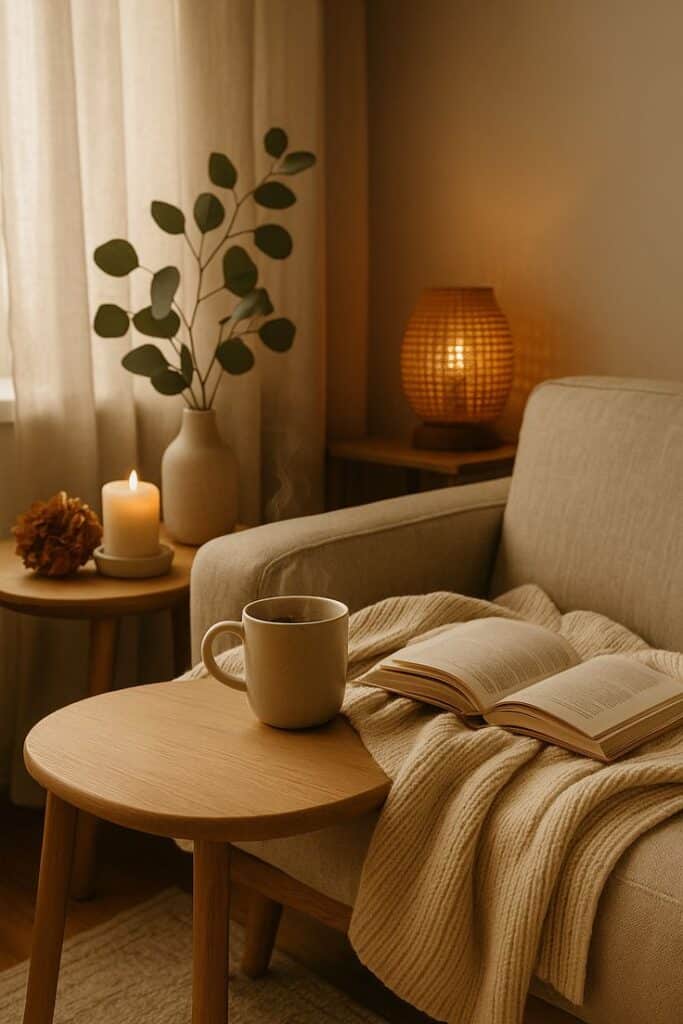
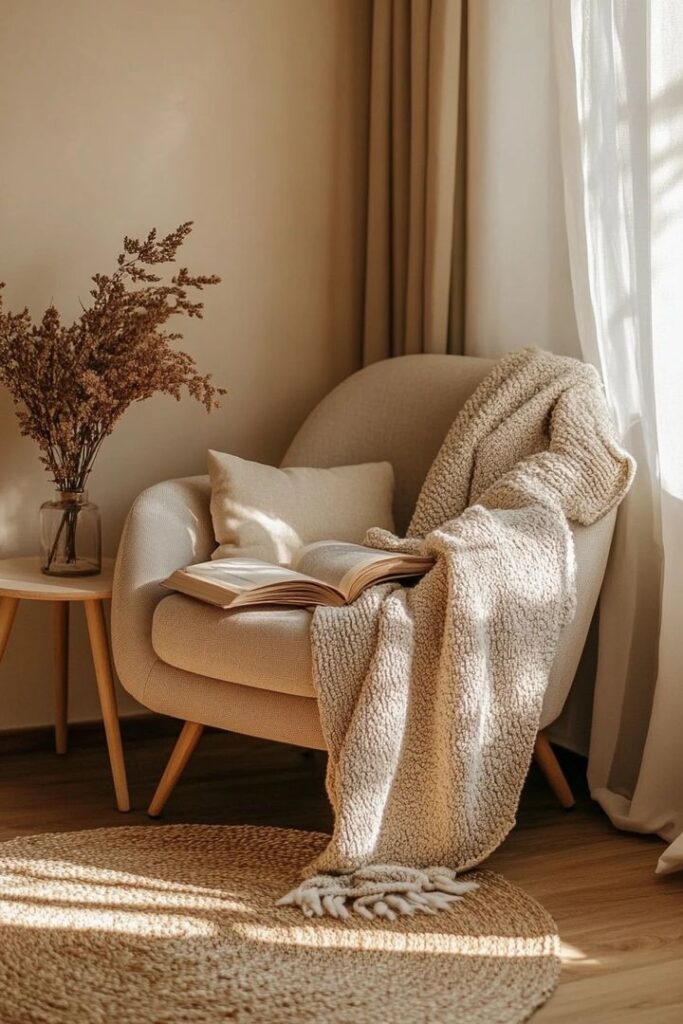
Use layers to build warmth. This means combining rugs, cushions, and blankets to add depth and comfort. Using rich textures like velvet or knit can make seating areas more inviting.
Furniture should be arranged to encourage conversation and ease of movement. Avoid overcrowding but don’t leave spaces too empty.
Colors should be calming. Stick to earth tones or pastels, and use contrast to highlight areas without overwhelming the eyes. Natural light is a plus, but supplement it with soft, indirect lighting when needed.
Common Mistakes to Avoid
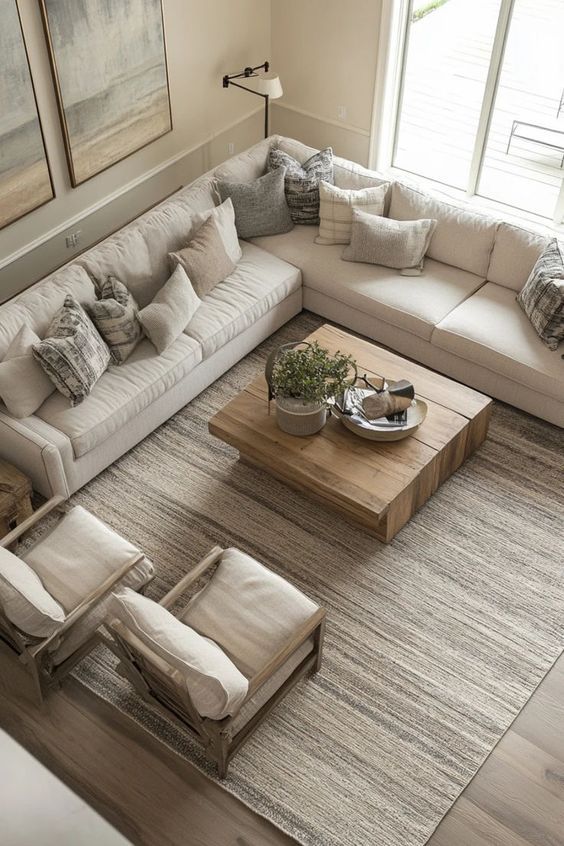

One mistake is over-cluttering. Too many items make a space feel busy, not cozy. Another problem is using too many dark or cold colors, which can make rooms feel small and unwelcoming.
Avoid harsh, bright lighting. It removes the sense of comfort. Also, ignoring texture can create a flat and cold look.
Neglecting proper furniture size can hurt coziness. Oversized furniture in a small room feels cramped, while tiny pieces in a large room feel lost. Matching furniture scale to room size is important.
Color Palettes for a Cozy Atmosphere
Colors play a big role in making a room feel warm and inviting. Using warm tones, accent colors, and the right mix of light and dark shades can help create a comfortable space. The balance between these elements makes a room pleasant without feeling overwhelming.
Choosing the Right Warm Tones
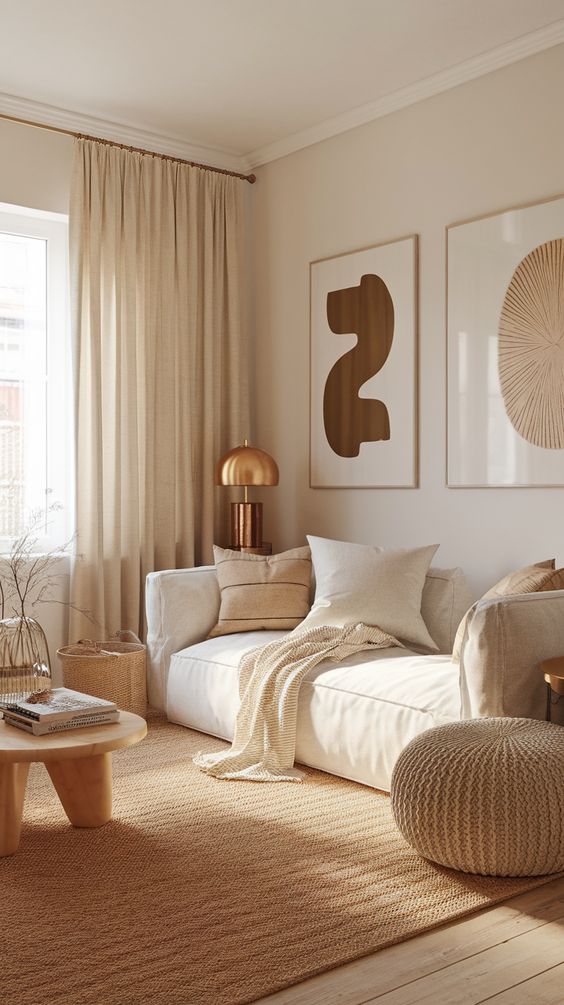
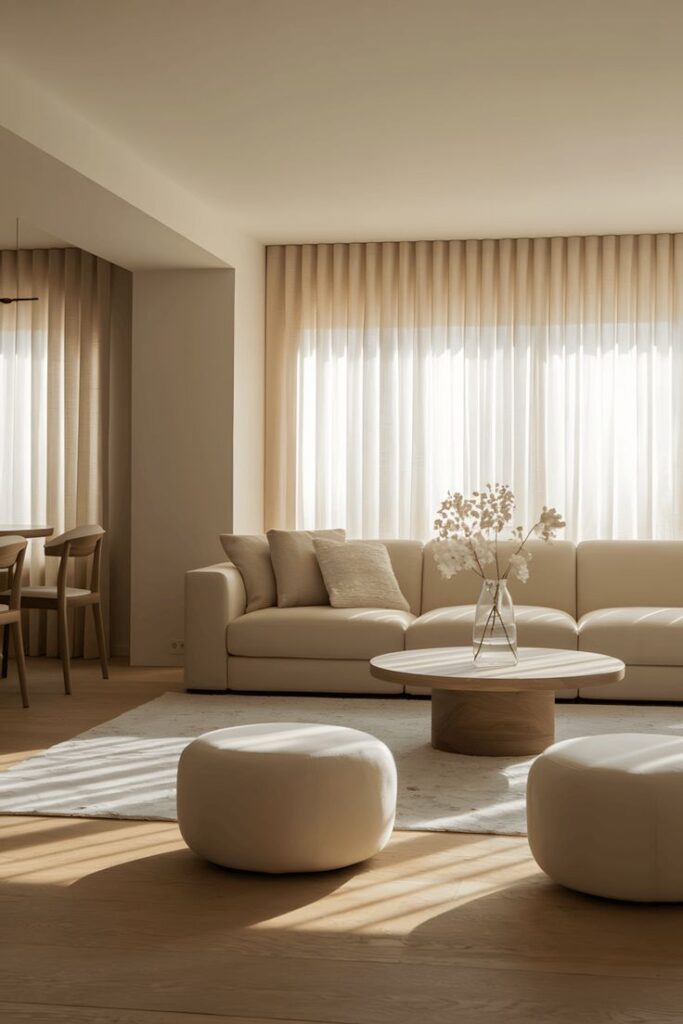
Warm tones like soft browns, beige, cream, and muted yellows create a natural, inviting feel. These colors make walls and large furniture pieces feel calm and welcoming. For example, a light tan on walls paired with cream sofas can soften a room instantly.
Rich burnt orange or deep red can add warmth but should be used carefully to avoid overpowering the space. Warm tones work well with wooden furniture and natural fabrics, which add texture and coziness.
Effective Use of Accent Colors
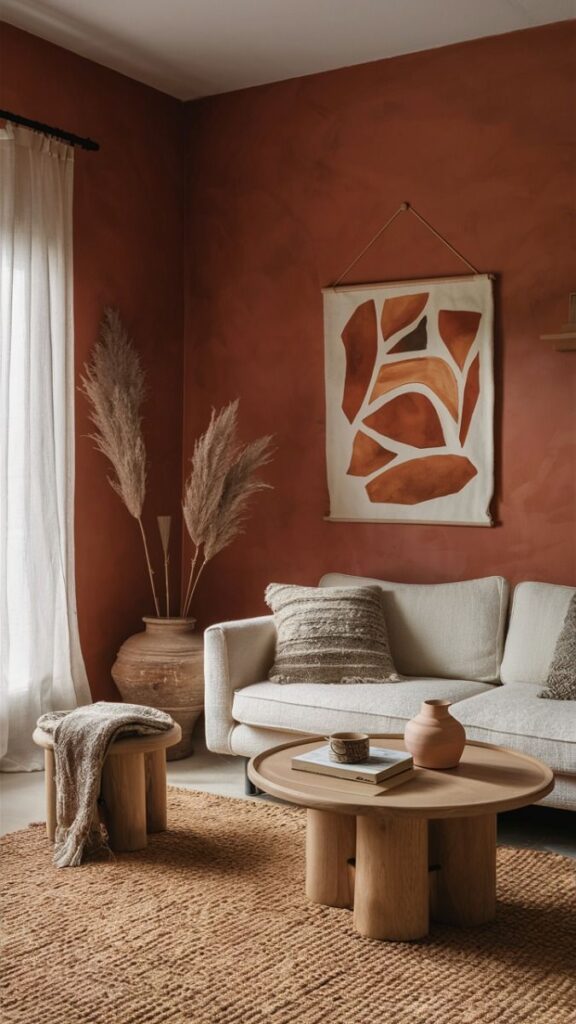
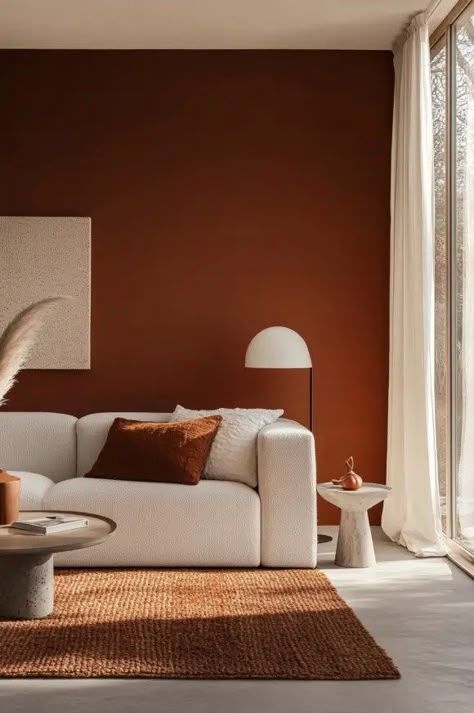
Accent colors add interest and personality to a room. They can be bold like navy blue or forest green or soft like pastel pink or dusty blue. These colors usually appear in smaller items like pillows, rugs, or curtains.
Accent colors should contrast with the main palette but keep the space feeling harmonious. For instance, a beige room can become more dynamic with deep blue cushions or a burnt orange throw. This gives life to the design without losing warmth.
Balancing Light and Dark Shades
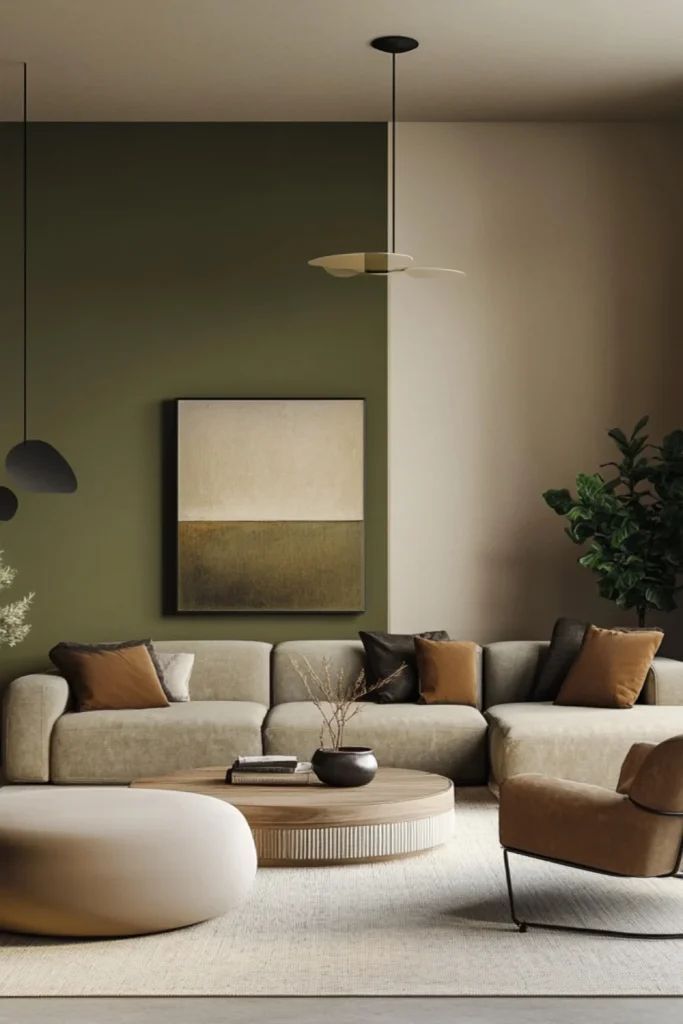
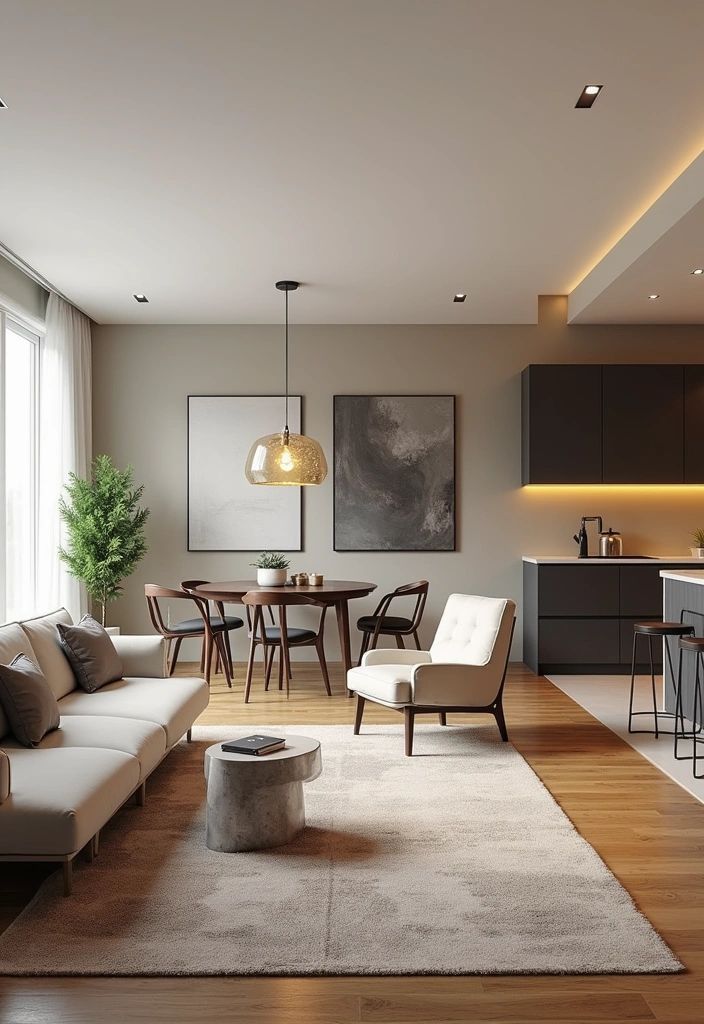
Balancing light and dark shades keeps a room from feeling too dull or too heavy. Light colors reflect natural light, making a space feel open and airy. Darker shades absorb light and add depth and richness.
A good strategy is to mix light walls with darker furniture or vice versa. For example: light cream walls paired with a deep brown sofa give a nice balance. This contrast encourages a cozy but not cramped atmosphere.
Textiles and Layering Techniques
Textiles add warmth and interest to a room by bringing in color, pattern, and comfort. Using different cloth types and layering materials creates a welcoming, textured look.
Selecting Soft Furnishings
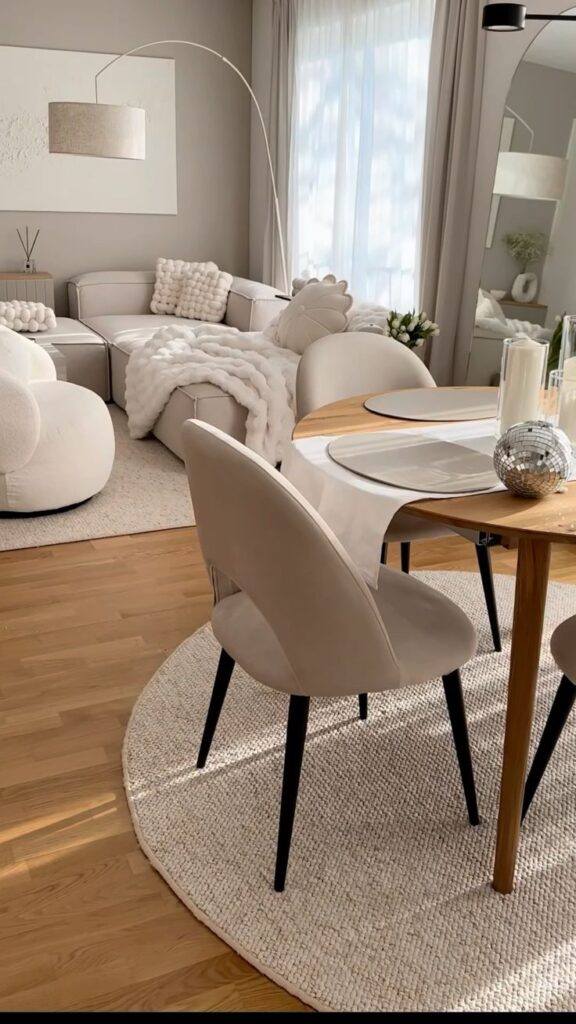
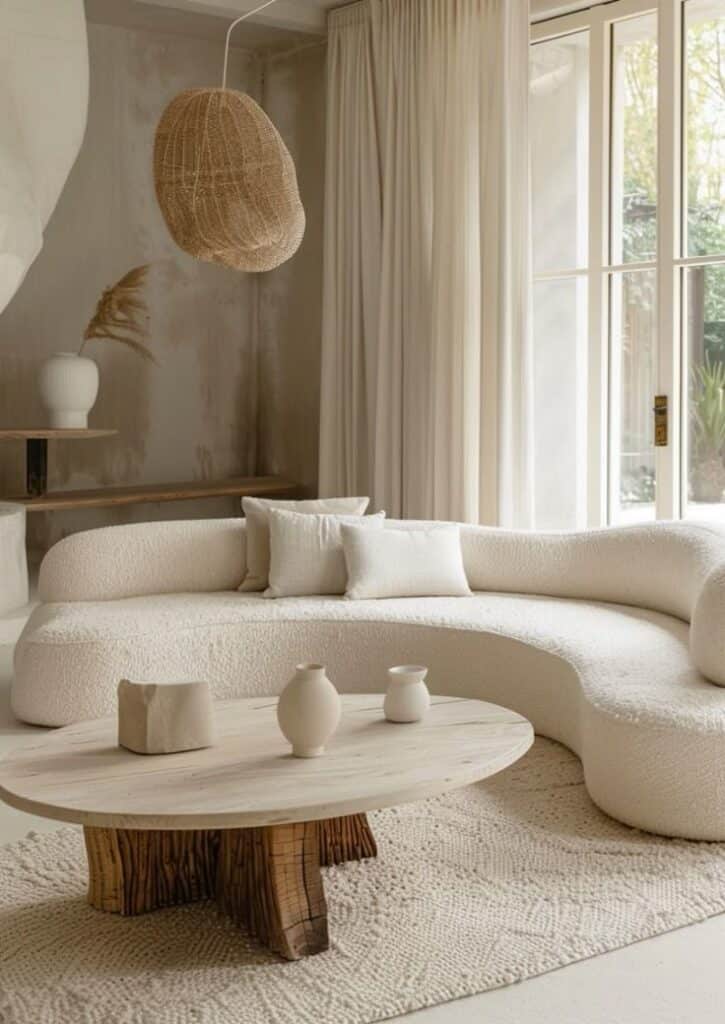
Soft furnishings like cushions, throws, and curtains make a space feel inviting. Choosing materials such as cotton, linen, or wool can add a soft touch. Wool and fleece are especially good for warmth.
Pick colors that match or complement the room’s palette. Neutral tones work well with bold patterns, while bright colors add a cheerful vibe.
Quality matters for durability and comfort. Look for fabrics that are soft to touch but also easy to clean.
Layering Rugs for Depth
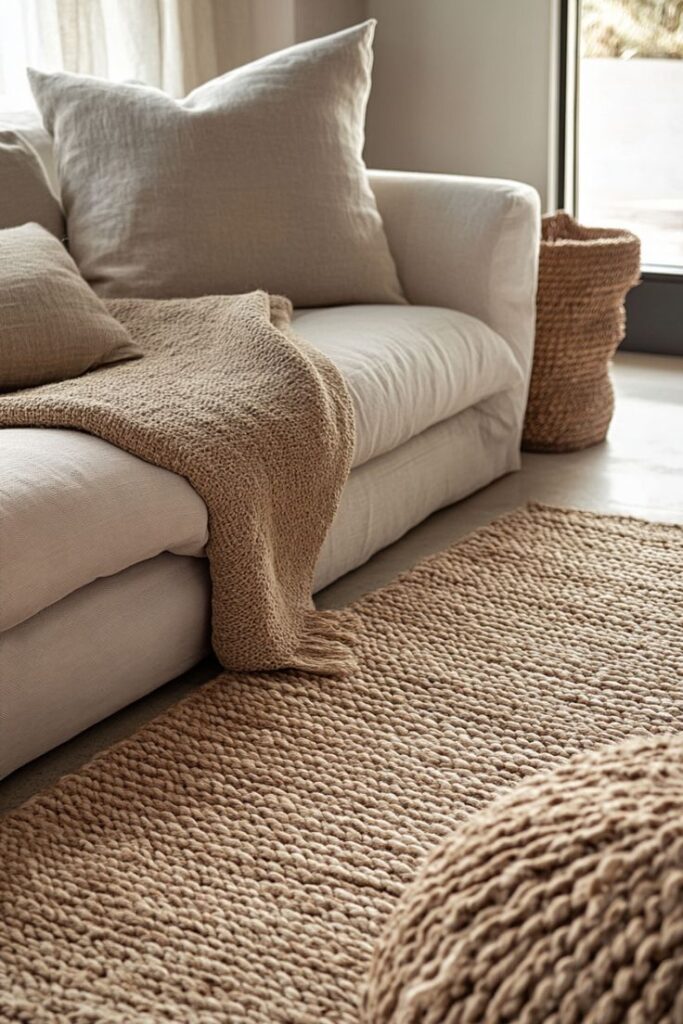
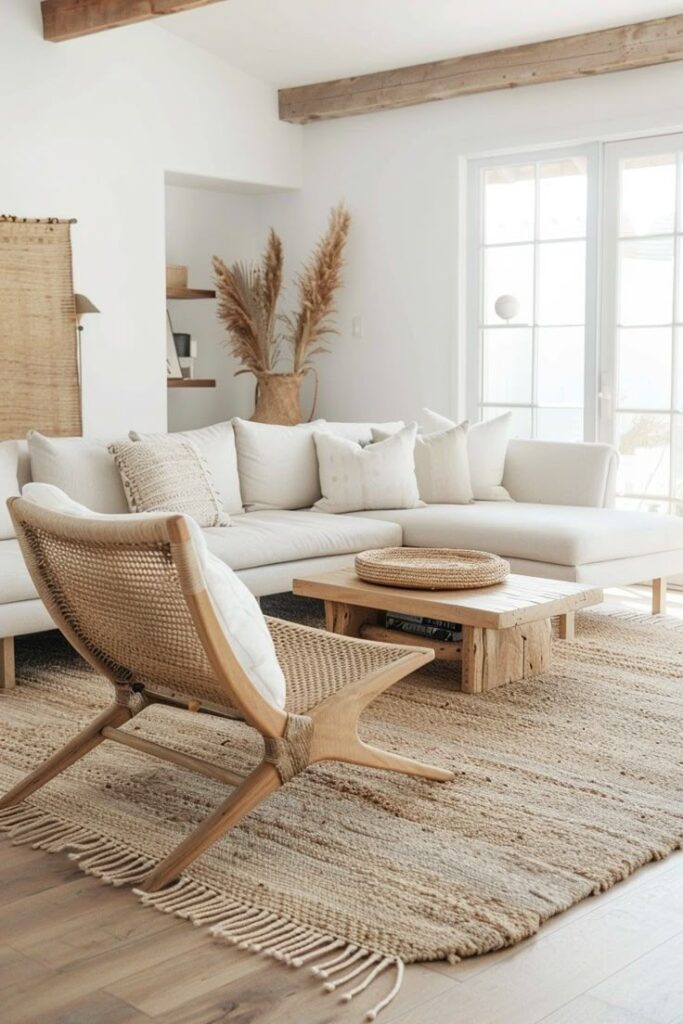
Adding rugs in layers builds visual interest and comfort. Start with a large base rug to cover the floor. On top, place smaller rugs with different patterns or textures.
Vary the size and shape of rugs to create a balanced look. For example, combine a flatweave rug with a plush shag in a sitting area.
Consider how each rug feels underfoot. Soft, thick rugs add warmth while thin rugs add style without bulk.
Mixing Different Textures
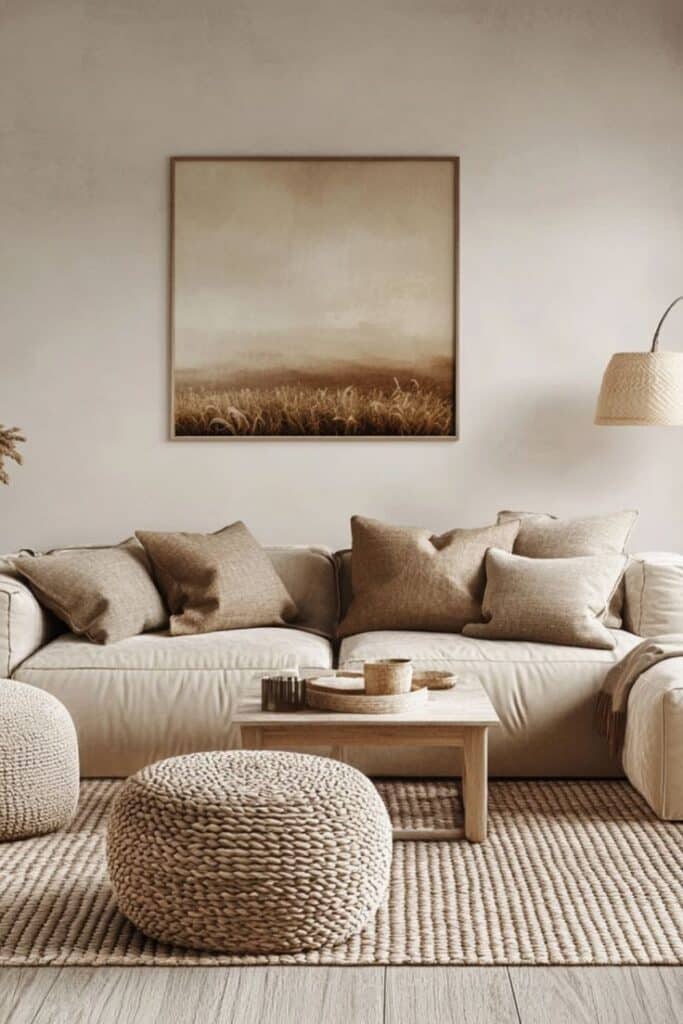
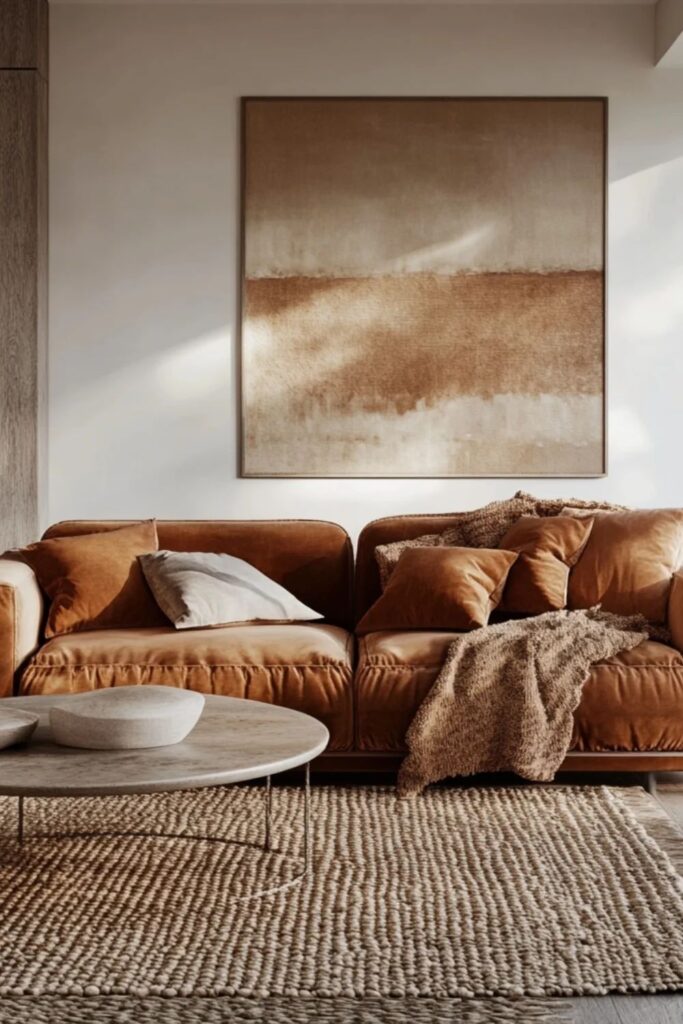
Mixing textures like velvet, chunky knits, and linen gives depth to a room. Combining smooth and rough surfaces keeps the space from feeling flat.
A velvet cushion paired with a knit throw offers contrast. Using baskets or woven trays can add natural texture.
Keep texture choices balanced to avoid clutter. Using three or four different textures in one room usually works best.
Lighting Strategies for Warmth
Lighting plays a big role in making a space feel cozy. Using different sources and choosing the right bulbs can create a soft, inviting atmosphere. Adding natural light or candlelight also adds warmth and comfort.
Layered Lighting Approaches
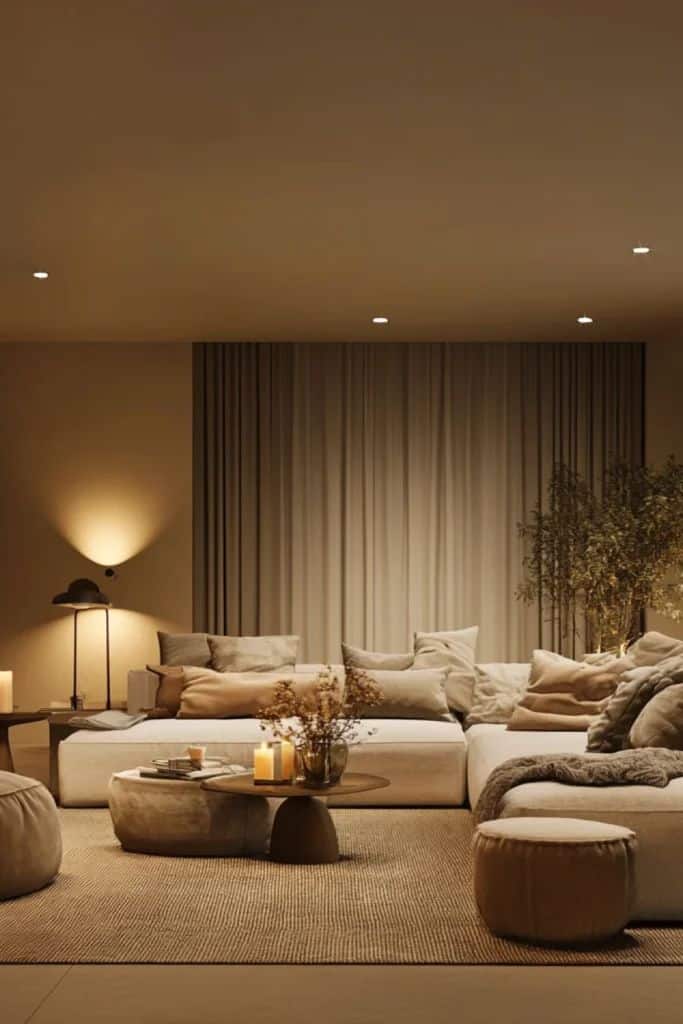
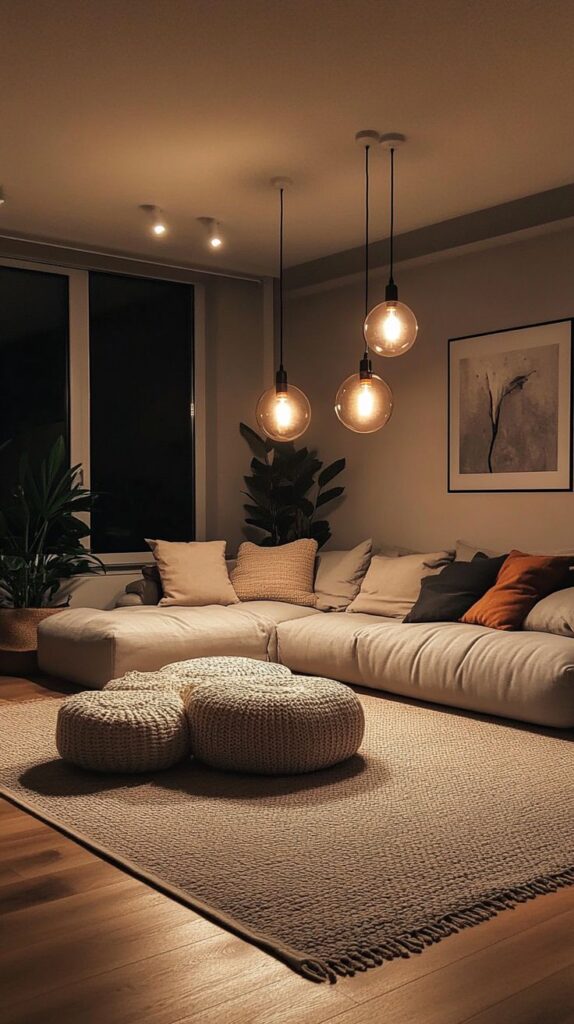
Layered lighting means combining different types of lights in a room. It usually includes ambient, task, and accent lighting.
Ambient lighting provides overall brightness, such as ceiling lights or wall sconces. Task lighting focuses on specific areas where activities happen, like reading lamps or kitchen under-cabinet lights. Accent lighting highlights features like artwork or plants.
Using all three types lets people adjust light levels. This flexibility helps create a warm, cozy mood tailored to the moment. Lamps with dimmers are good tools for controlling light strength.
Selecting Warm Light Bulbs

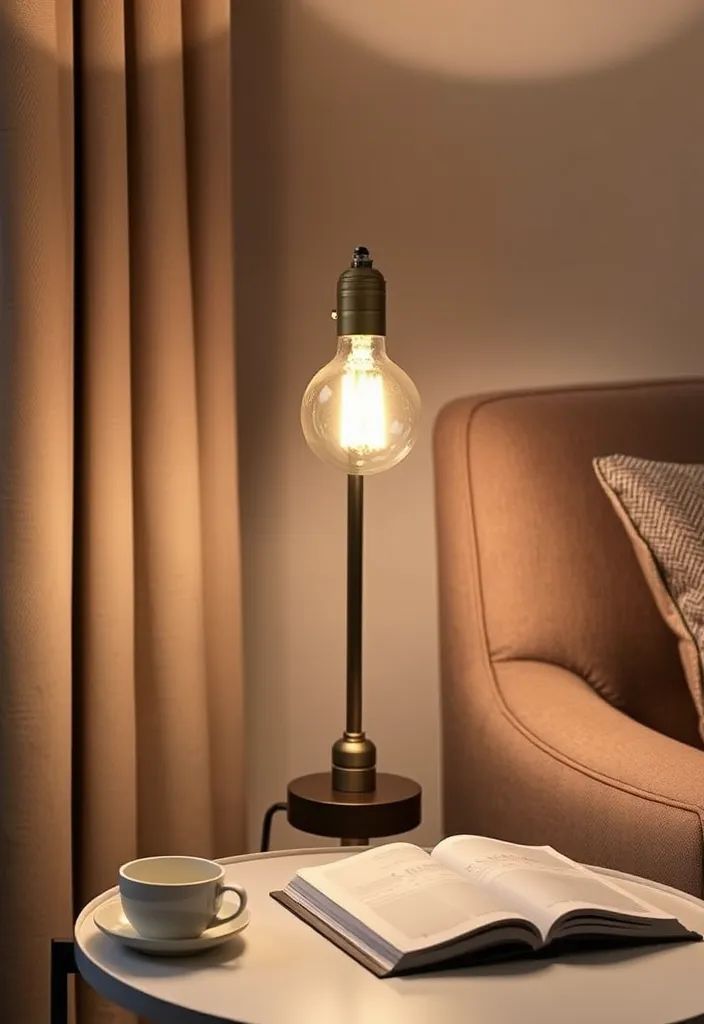
Warm light bulbs give off a soft yellow or orange glow. They usually have a color temperature between 2700K and 3000K.
Choosing bulbs measured in lumens helps control brightness. For cozy spaces, bulbs with lower lumens around 400-800 work well.
LED bulbs save energy and come in warm tones. Avoid bulbs labeled “daylight” or “cool white” because they have blue or harsh white light, which feels cold.
Selecting the right bulb color and brightness creates a soothing, relaxed environment.
Incorporating Candlelight and Natural Light

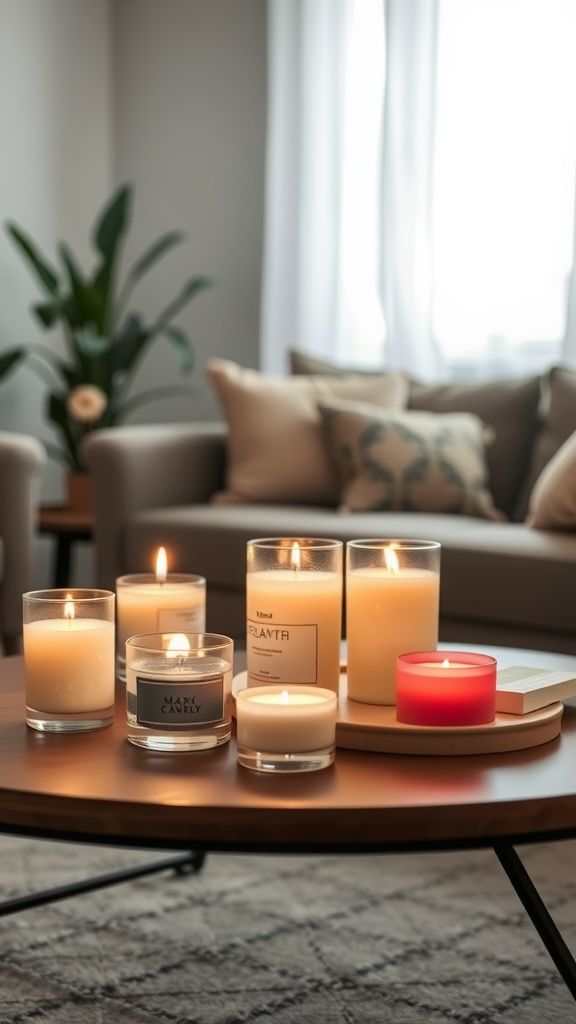
Candlelight adds flickering, soft light that feels calming and inviting. Grouping candles together or using lanterns can increase the warm glow.
Natural light warms a room during the day. Sheer curtains or blinds filter sunlight, softening the brightness without blocking heat.
Positioning mirrors near windows reflects natural light deeper inside. This technique spreads light evenly and adds warmth without extra bulbs.
Combining candlelight and natural light fills a space with natural warmth and comfort all day long.
Furniture Arrangement for Comfort
Good furniture setup is key to making a space feel welcoming and easy to use. It helps people relax, talk, and enjoy the room’s purpose. Comfort comes from putting pieces where they work best and making sure everyone has room.
Optimizing Layout for Social Spaces
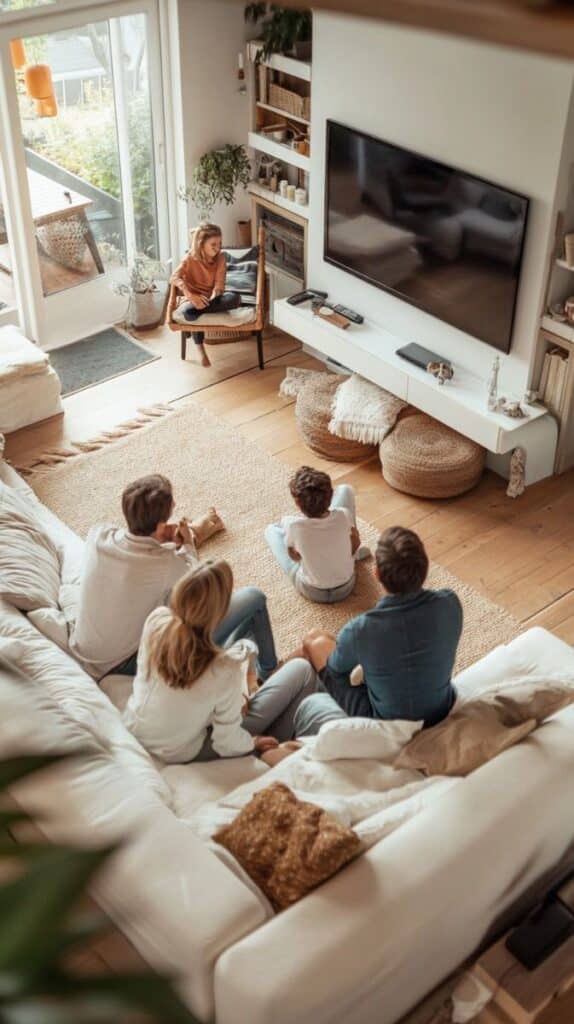
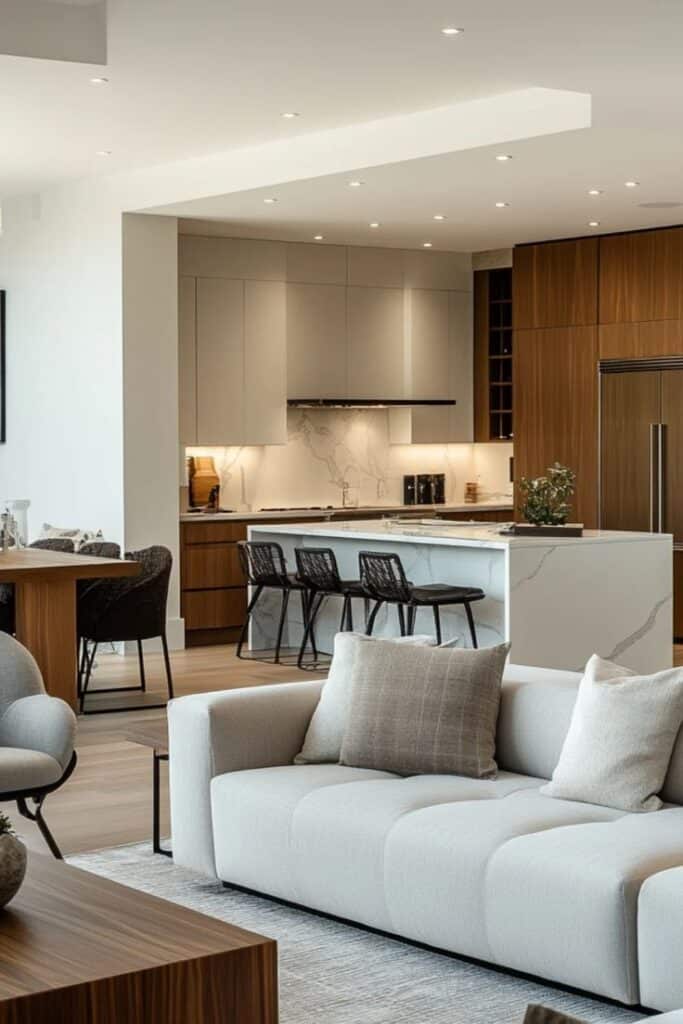
In social areas, furniture should encourage conversation and easy movement. Chairs and sofas are best arranged in a circle or U-shape to face each other. Avoid placing large pieces in pathways, so people can walk freely without feeling cramped.
A coffee table in the middle helps hold drinks and snacks but should not block access. Leave at least 18 inches between seating and tables for comfort. Use rugs to define zones and keep the room balanced.
Choosing Inviting Seating
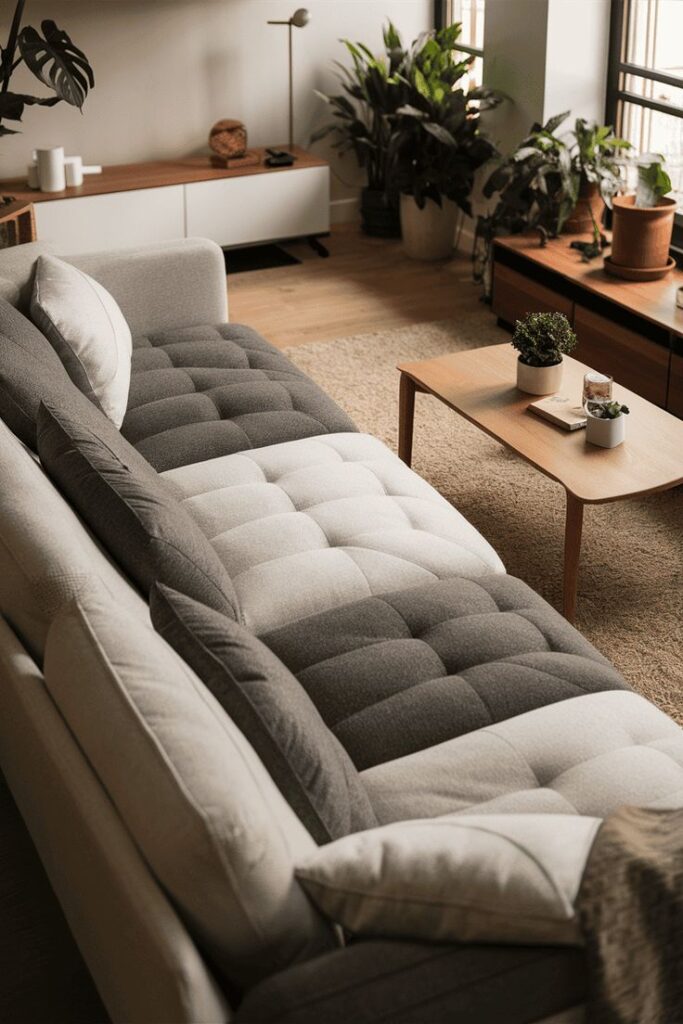
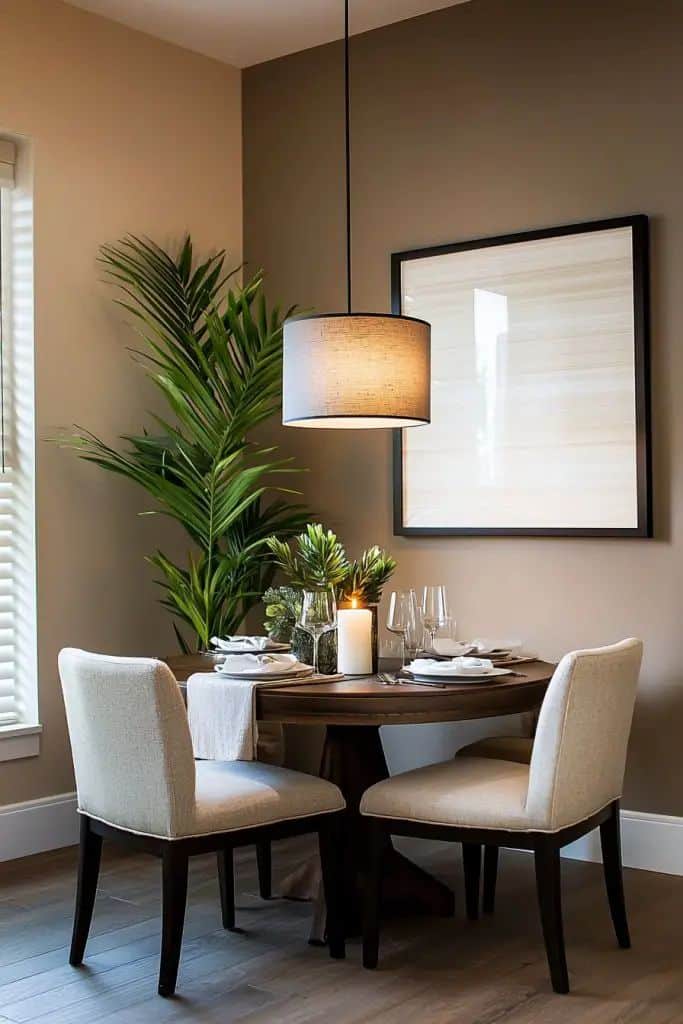
Seating affects how comfortable a room feels. Soft cushions and curved armrests make chairs more inviting. Mixing different seat types, like sofas with armchairs or ottomans, offers choice for guests.
Materials matter too. Fabric covers feel warmer than leather and often add coziness. Avoid seating that is too firm or too low, which can be hard to get out of or unpleasant to sit on for long.
Creating Intimate Nooks
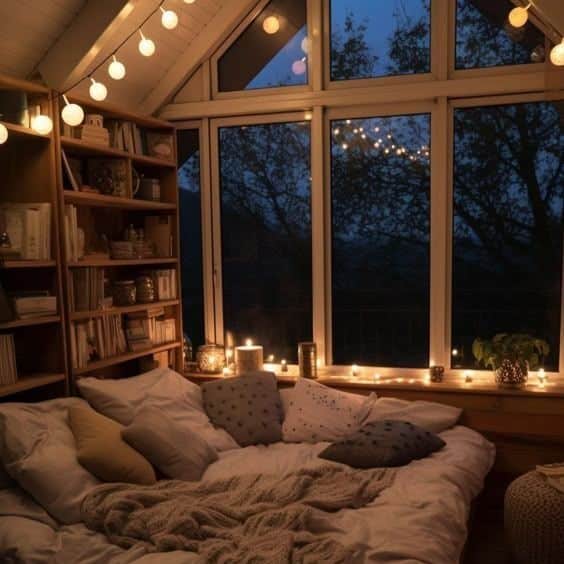
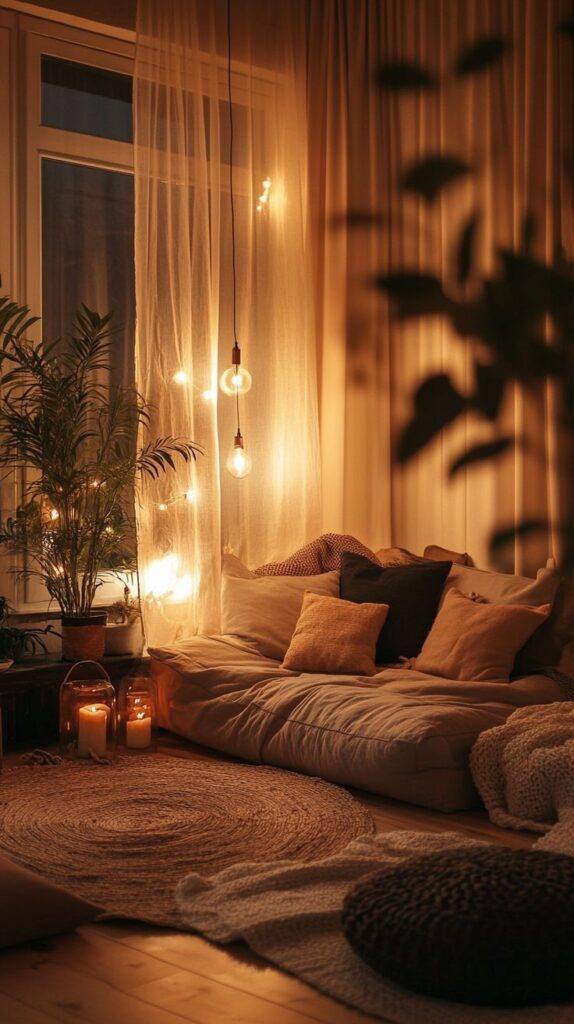
Small corners or unusual spaces can become cozy nooks with the right furniture. A plush chair or a small loveseat paired with a floor lamp can create a quiet spot to read or relax.
Use shelving or a small table to hold books and drinks. Soft throws and cushions add warmth. Position these nooks away from high-traffic areas to keep them peaceful and inviting.
Accessorizing for a Cozy Feel
Adding the right accessories can make a room feel warm and inviting. Soft textures, personal items, and green plants all play a role in creating a comfortable space.
Incorporating Soft Decorative Elements
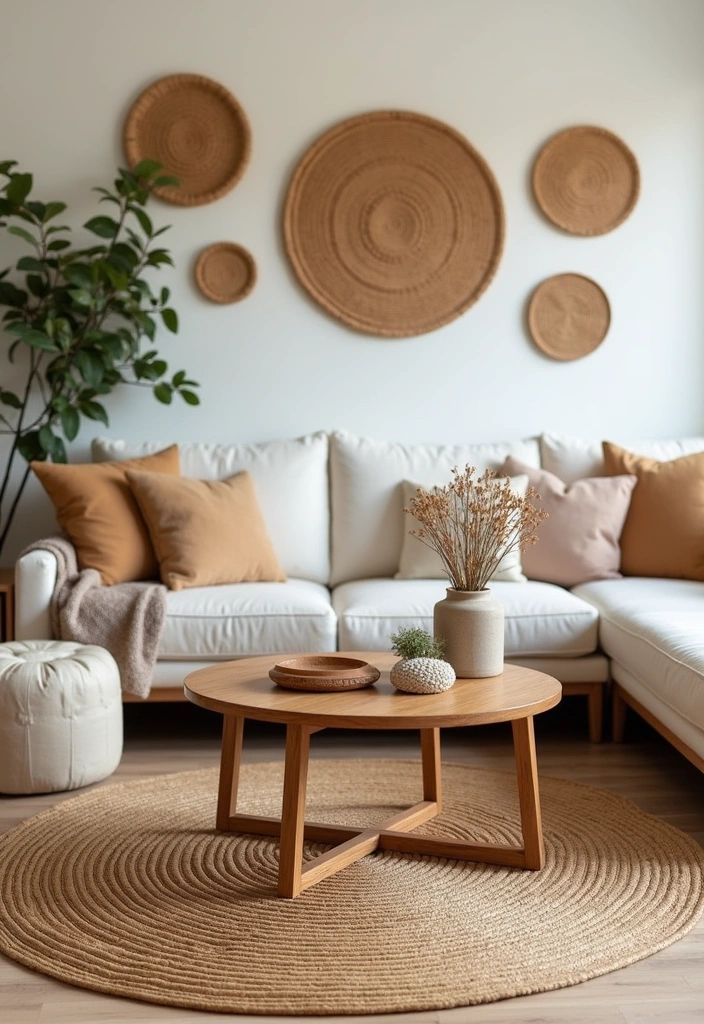
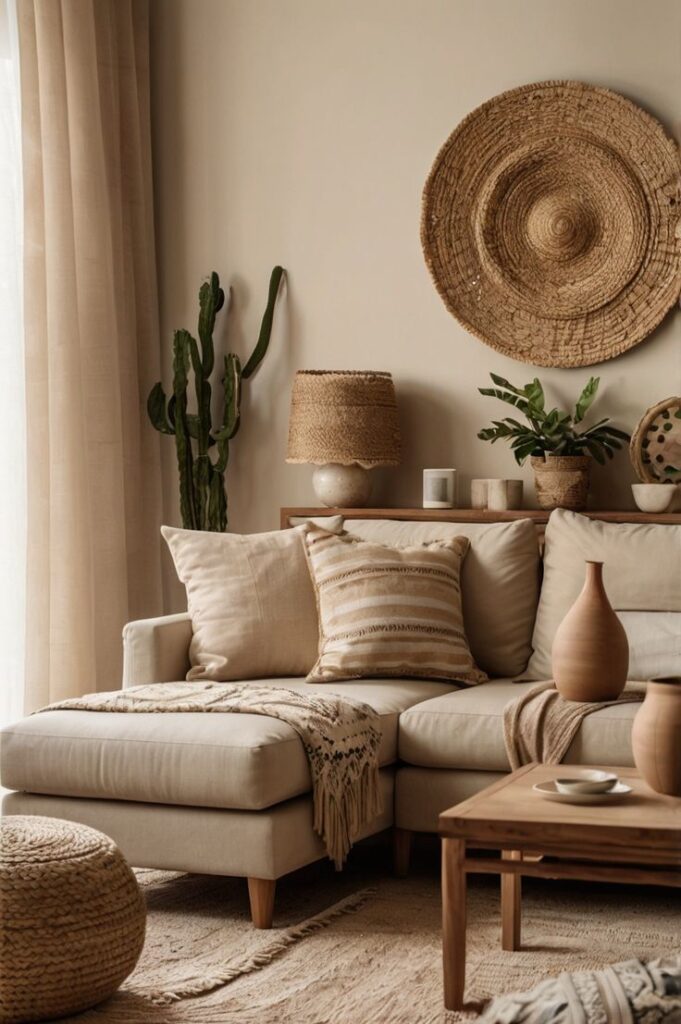
Soft items like throw blankets, pillows, and rugs add warmth and comfort. Using materials such as wool, fleece, or velvet makes the space feel cozy to the touch.
Layering different textures is helpful. For example, pairing a chunky knit blanket with a smooth velvet pillow creates visual interest and a tactile contrast.
Colors matter too. Warm, earthy tones like beige, rust, or soft gray can make a room feel calm and relaxing. Avoid too many bright colors, as they can grow tiring quickly.
Personal Touches with Art and Décor
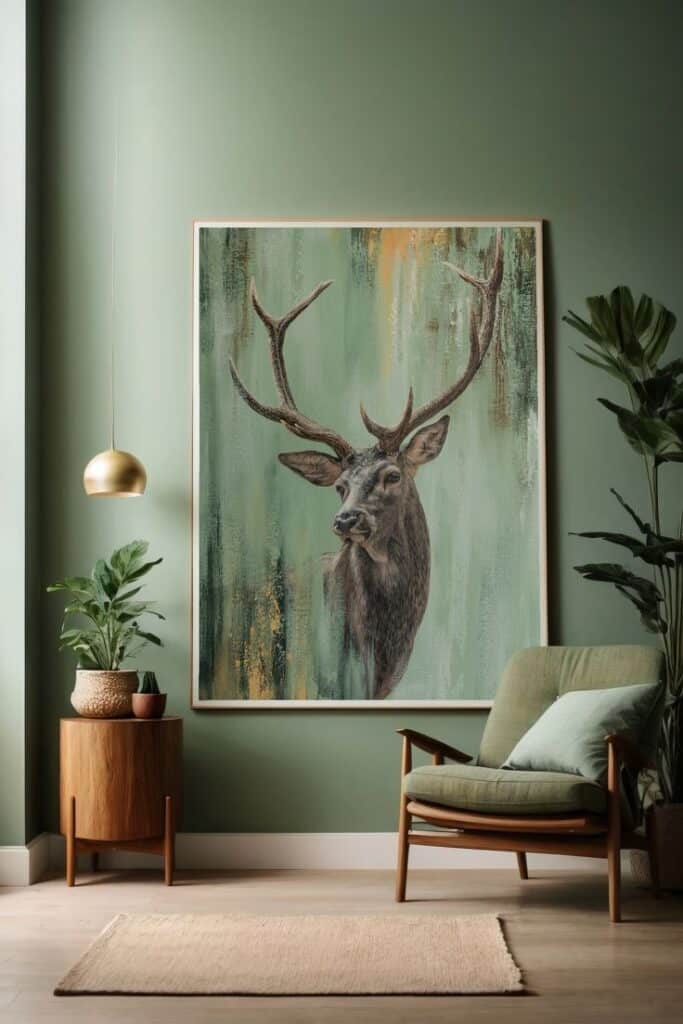

Adding personal items, like framed photos or art, helps make a space feel lived-in. People respond to meaningful objects, which makes a room feel welcoming.
Wall art should be grouped in small, balanced clusters to avoid clutter. Simple shelves work well to display ceramics or books that reflect personal style.
Candles and small lamps give soft light and a homey vibe. Choosing simple, neutral pieces lets the room feel peaceful rather than busy.
Using Plants and Greenery

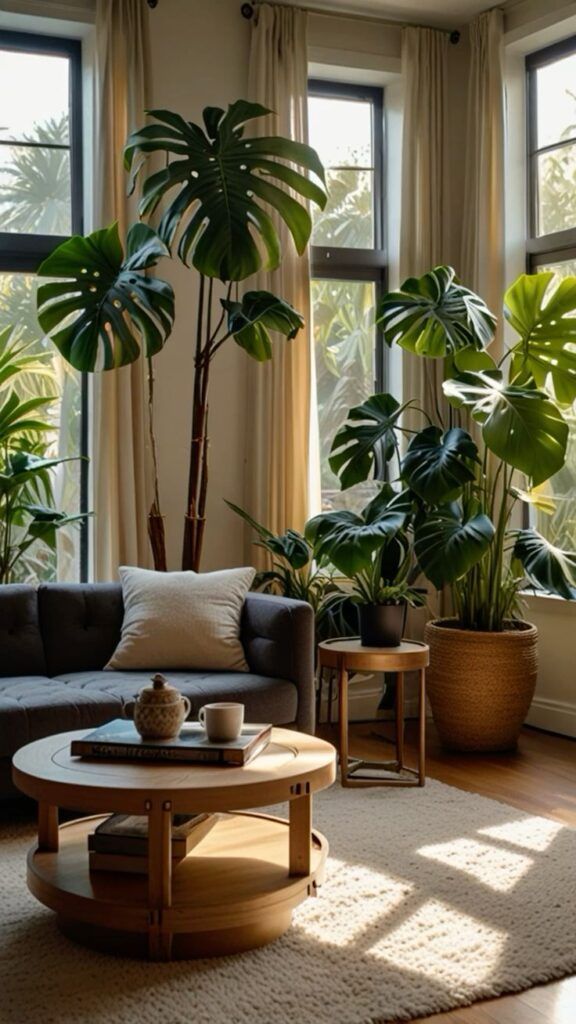
Plants bring life and color to any room. They improve air quality and add a natural element that creates a sense of calm.
Choosing easy-care plants like pothos, snake plants, or succulents suits many skill levels. Grouping plants of various heights and leaf shapes adds texture.
Using matching pots or baskets can tie the look together and keep the space neat. Avoid overcrowding by spreading plants throughout the room for balance.
Seasonal Updates for a Cozy Home
Changing seasons call for specific adjustments to keep a home feeling warm and inviting. Small details like fabric choices, lighting, and colors can make a big difference in comfort and style, fitting each time of year.
Easy Swaps for Colder Months
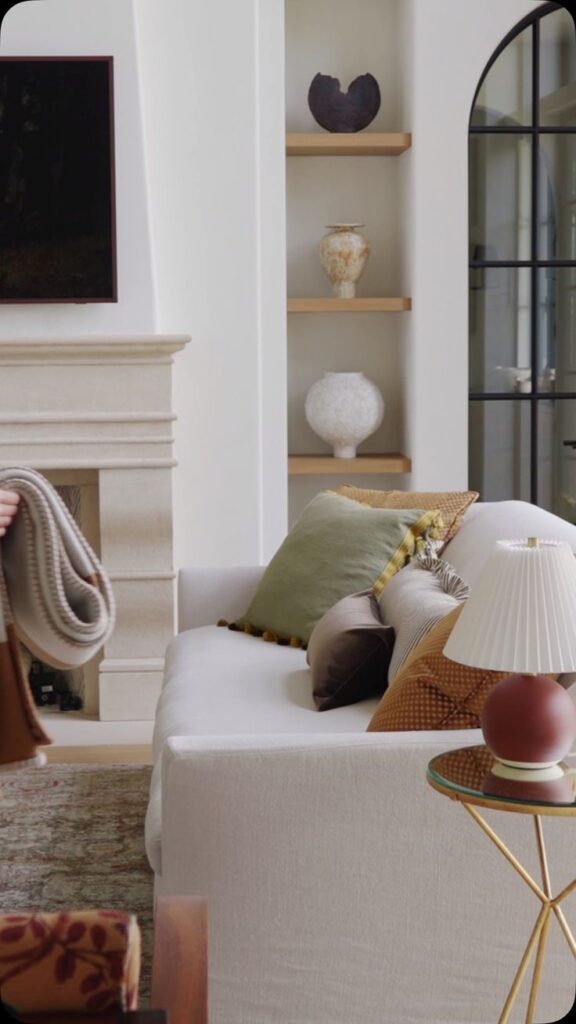
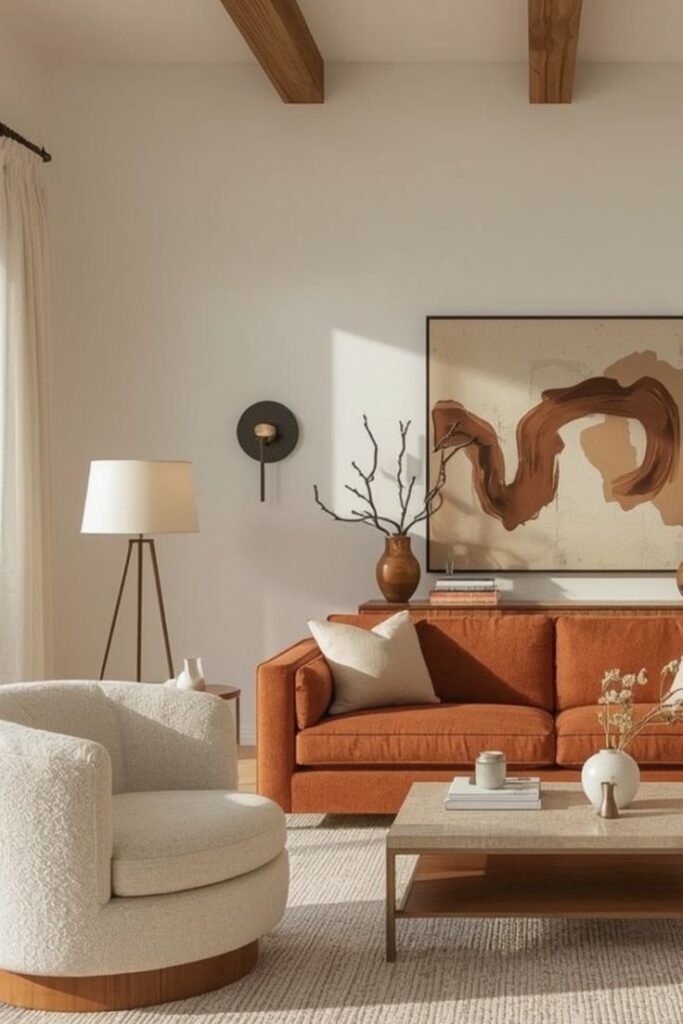
In colder months, adding thick, textured fabrics can help trap heat and create a snug atmosphere. Thick wool or fleece blankets and cushions in warm colors like deep reds, oranges, or browns work well.
Layer rugs, especially on hardwood or tile floors, to keep feet warm and soften the room. Replace sheer curtains with heavier drapes to block drafts and retain warmth.
Lighting is key too. Use warm light bulbs and candles to add a soft glow. A fireplace or a portable heater adds both heat and a cozy look.
Refreshing Comfort in Warmer Seasons
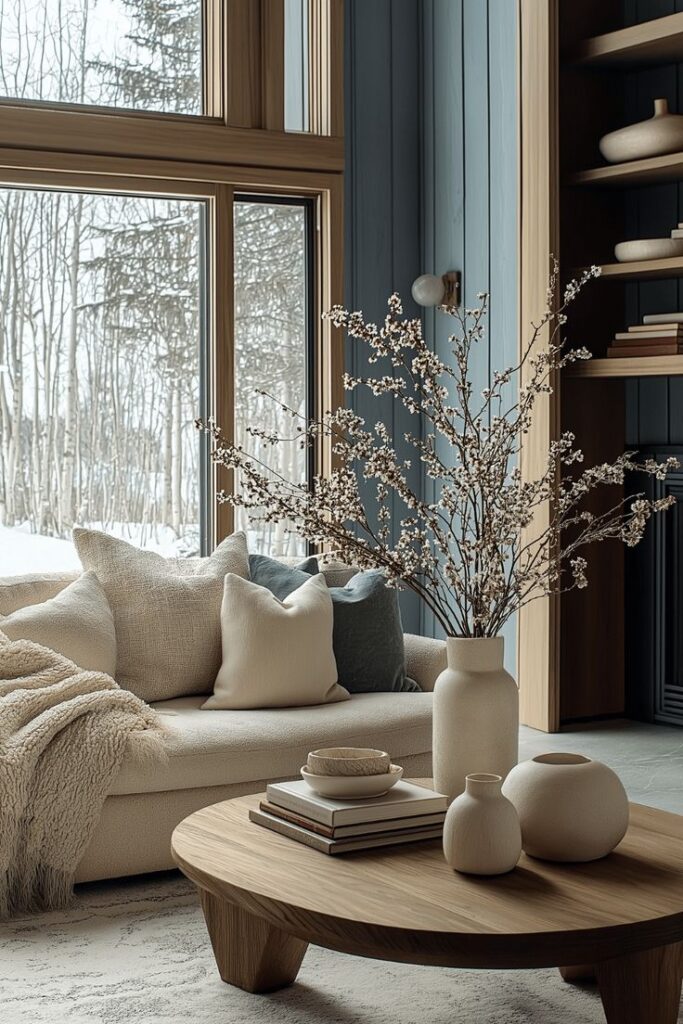
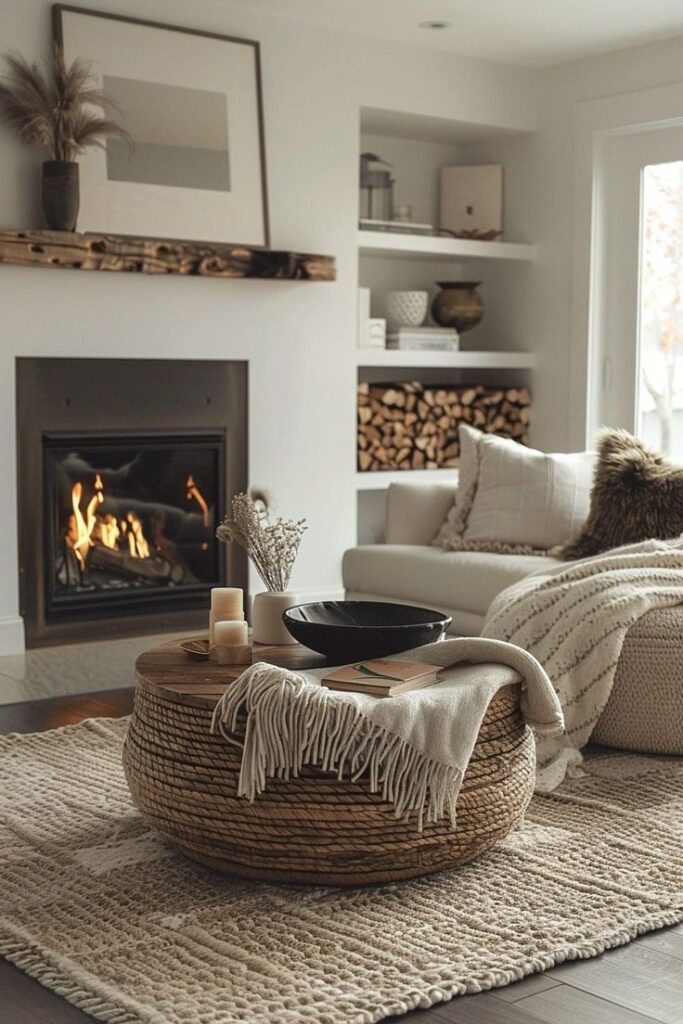
For warmer seasons, swap heavy fabrics for lighter ones like cotton or linen. Use cool tones such as blues, greens, and whites to create a fresh, breezy feel.
Remove thick rugs to let air flow better and keep rooms open. Lighter curtains or blinds can filter sunlight while keeping rooms bright but cool.
Replace heavy throws with lightweight blankets. Add plants to improve air quality and add a natural vibe. Use fans or portable air coolers to help circulate air without making the room feel cold.
Small Space Cozy Interior Design
Small spaces need careful choices to feel warm and inviting. Using the right furniture, colors, and storage can create a comfortable area without clutter or crowding. Comfort and functionality should work together in every corner.
Maximizing Comfort in Compact Areas
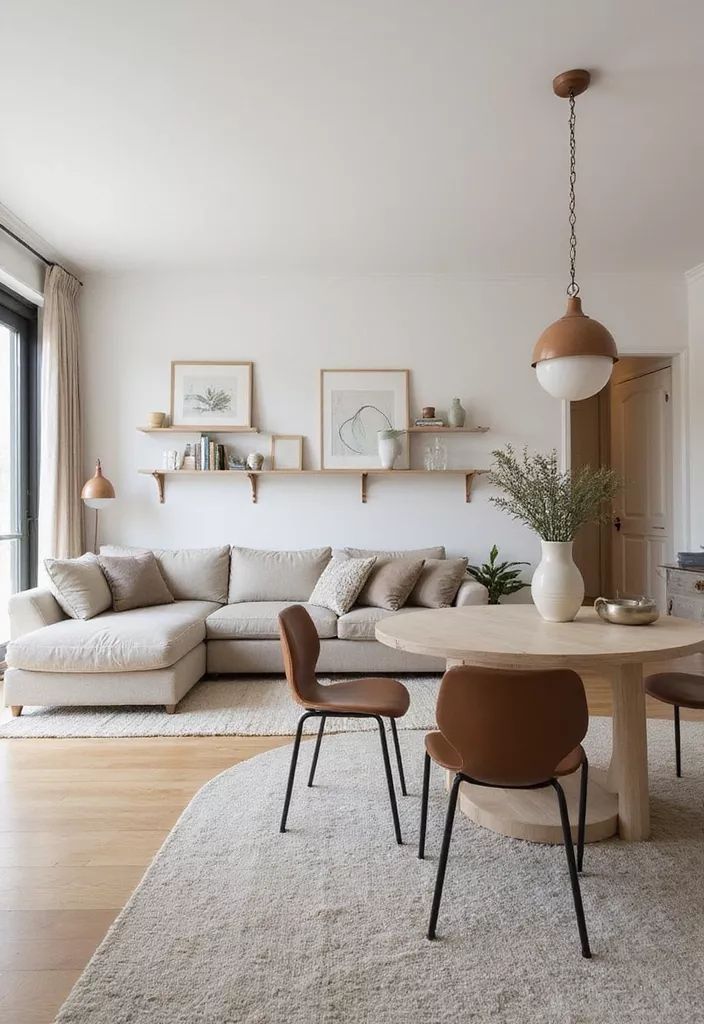
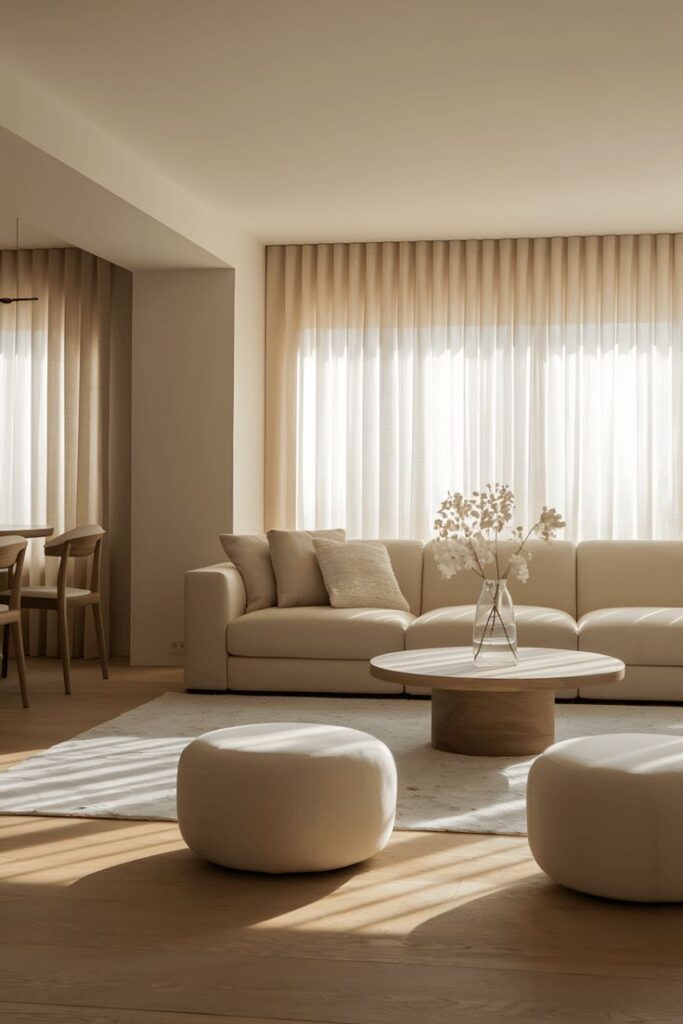
In small spaces, soft fabrics like plush throws and cushions help make seating areas more inviting. Layering different textures, such as wool rugs and velvet pillows, adds depth without taking up extra space.
Choosing furniture with clean lines and a low profile keeps the area open. Multi-functional pieces, like a storage ottoman, can serve as both seating and a place to store items.
Lighting is key. Using table lamps or string lights creates a warm glow that makes the room feel cozy without harsh overhead lights.
Smart Storage Solutions
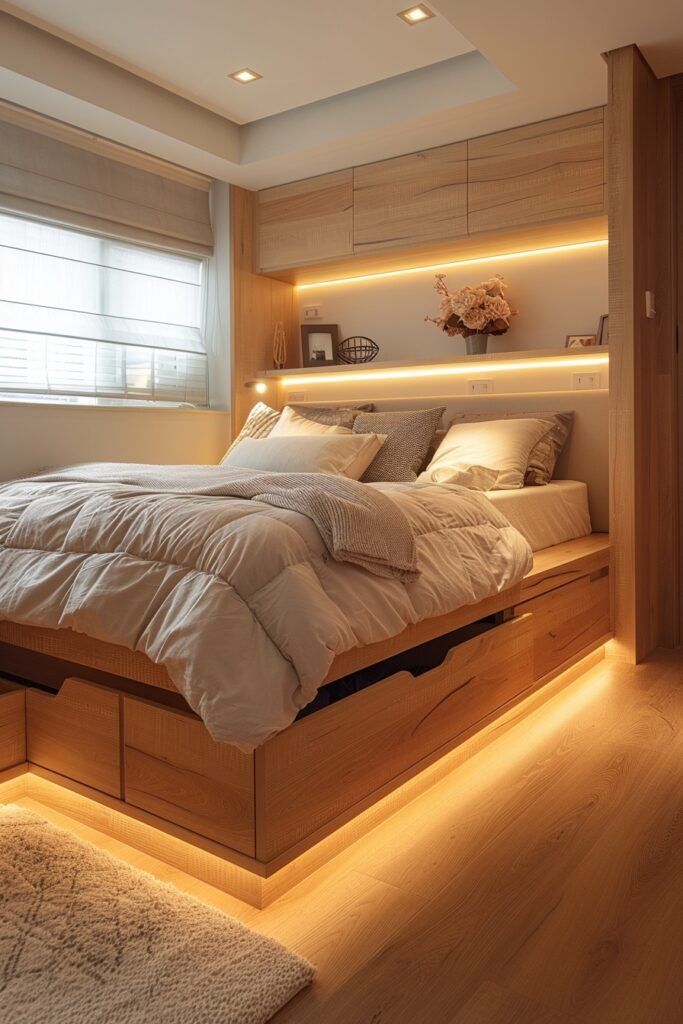
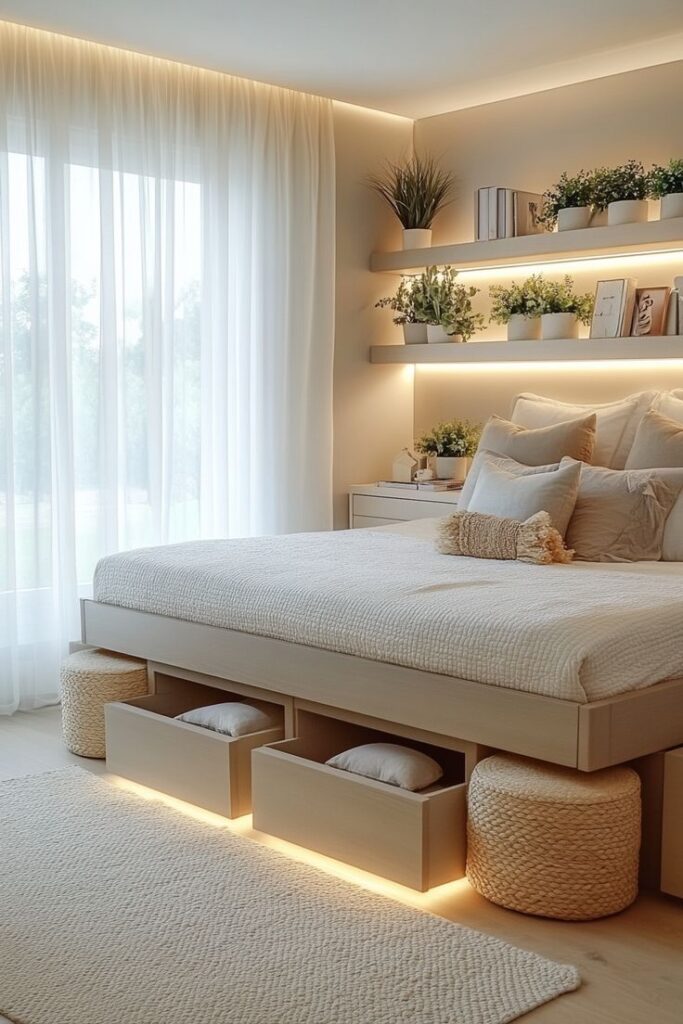
Vertical storage helps keep floors clear. Shelves mounted on walls make use of empty space and display personal items attractively.
Furniture with built-in storage, such as beds with drawers or coffee tables with hidden compartments, reduces clutter.
Baskets and boxes in neutral colors keep smaller items organized and blend into the room’s design. Using labels on storage containers helps maintain order while making it easy to find things.
Sustainable Cozy Design Choices
Choosing materials and decor that support the environment can make a space feel warm and responsible. Thoughtful selections help reduce waste and bring natural elements into the home.
Eco-Friendly Materials
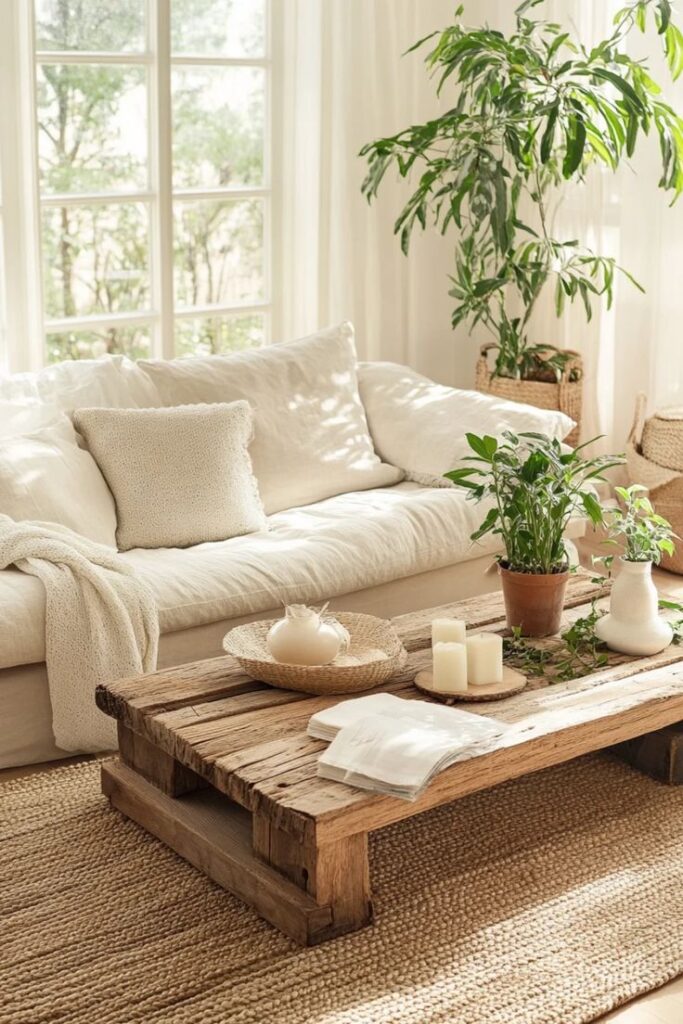
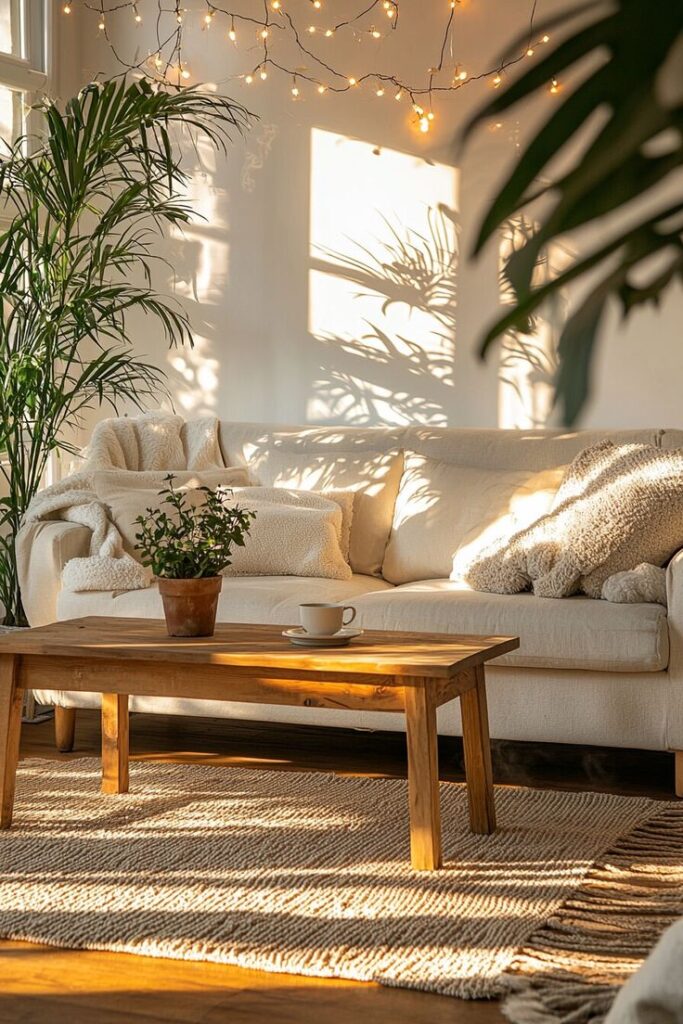
Using natural fibers like organic cotton, wool, and linen is a common way to create warmth without harming the planet. These materials are breathable and durable, adding a soft texture to any room.
Bamboo and cork are also good options for flooring and furniture. Both are fast-growing and renewable, making them better choices than hardwood from slow-growing trees. Low-VOC paints reduce indoor air pollution, improving the comfort of the space.
Upcycling and Repurposing Decor
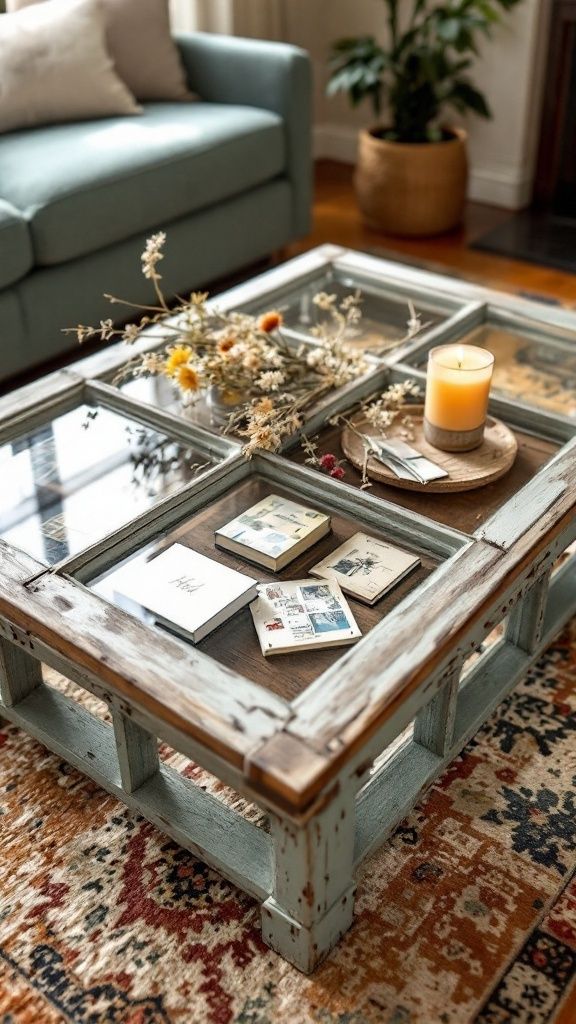

Upcycling old furniture or decor prevents items from going to landfills. A worn wooden chair can be sanded and painted to match a new style. Old blankets and fabrics can be sewn into throw pillows or curtains.
Repurposing uses what’s on hand to create a unique look. For example, glass jars become candle holders, and vintage books can be stacked to form a side table. These choices save money and add character to a cozy room.
- 215shares
- Facebook0
- Pinterest215
- Twitter0
- Reddit0








